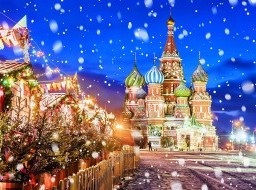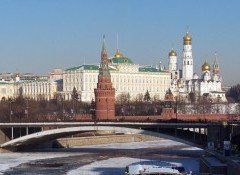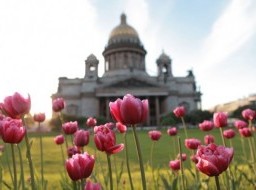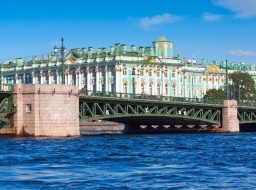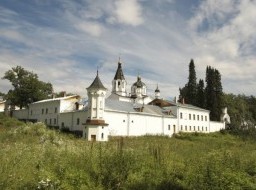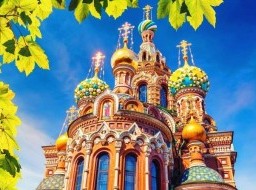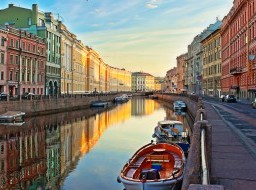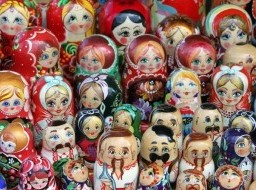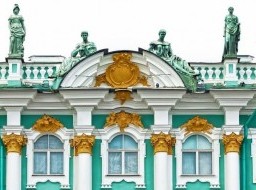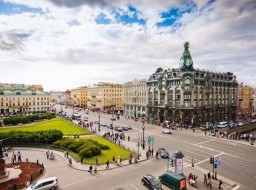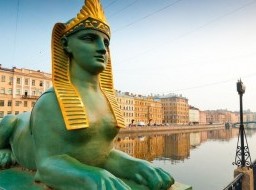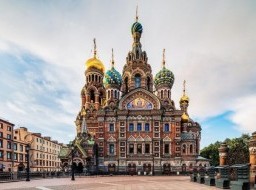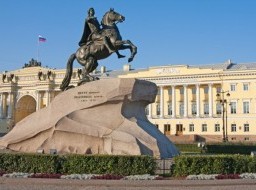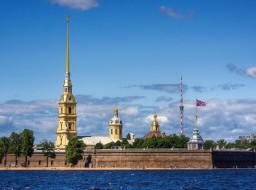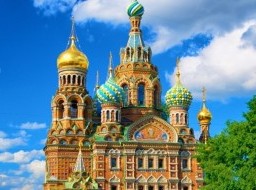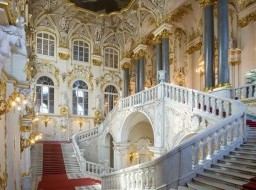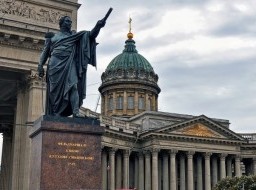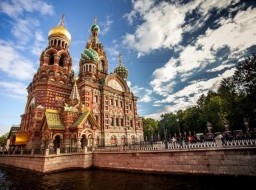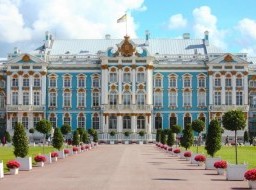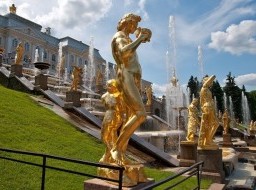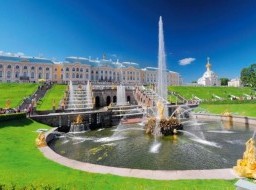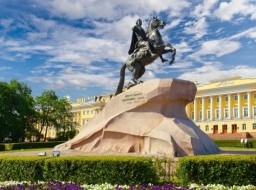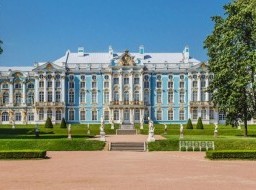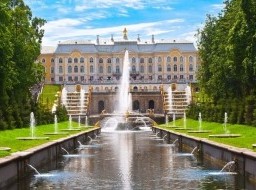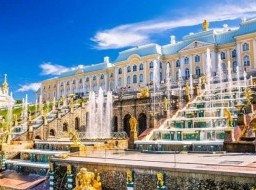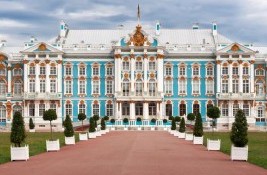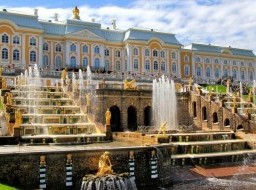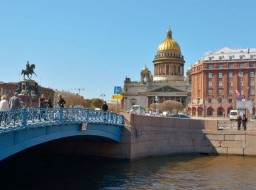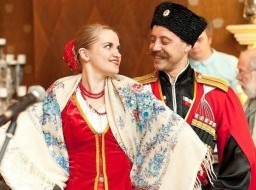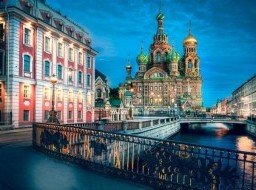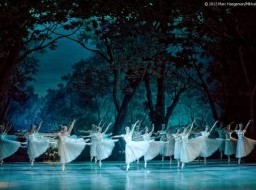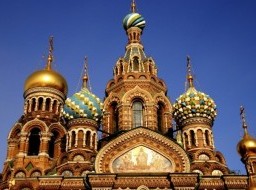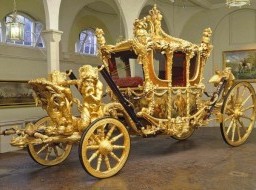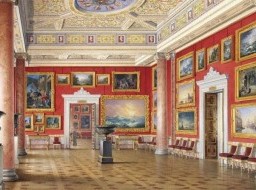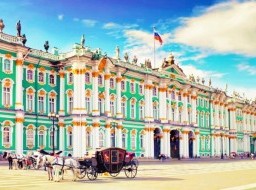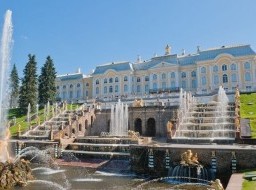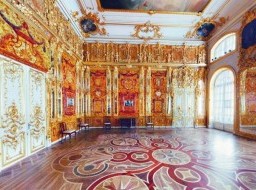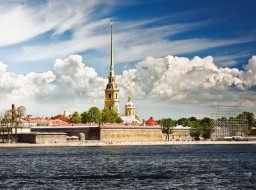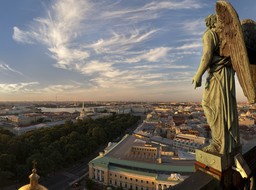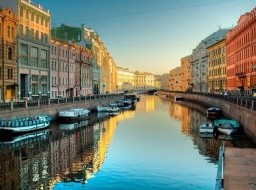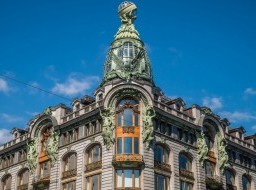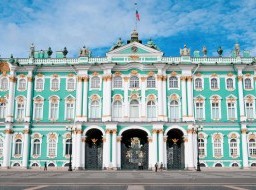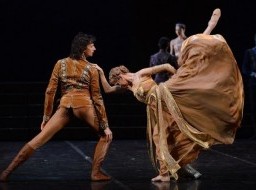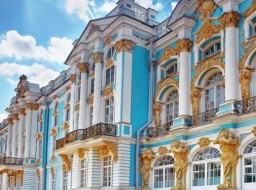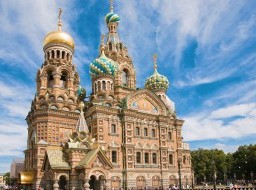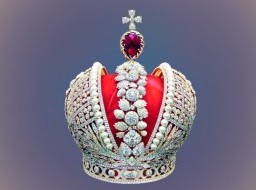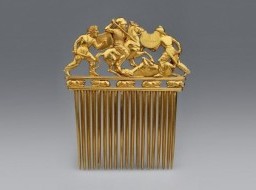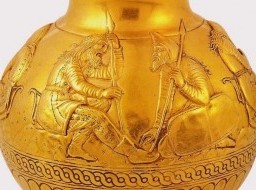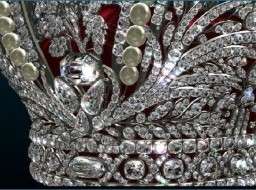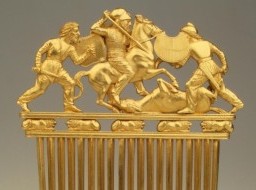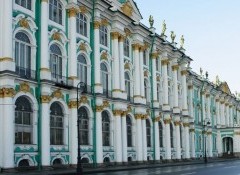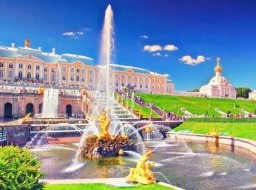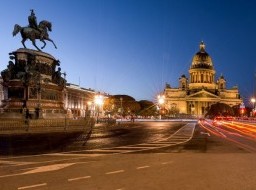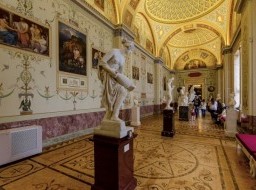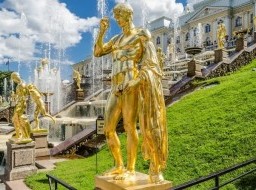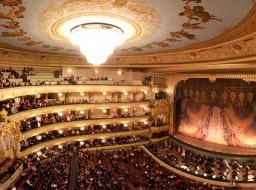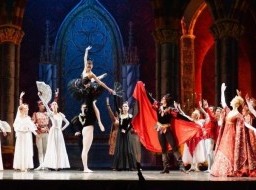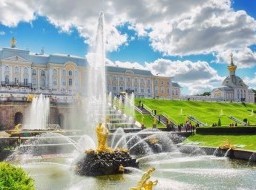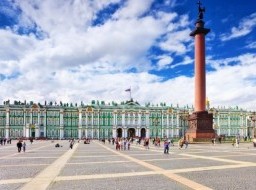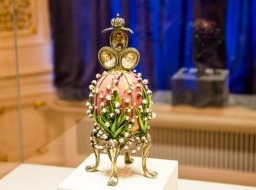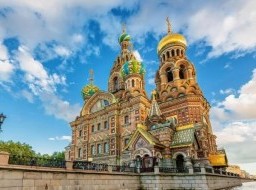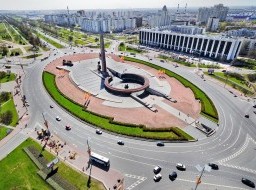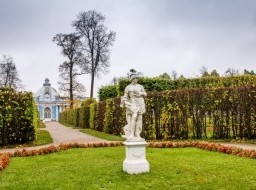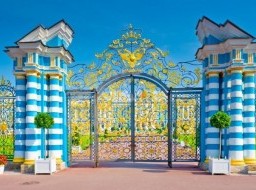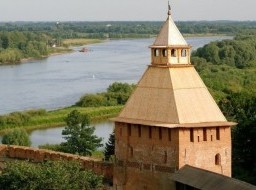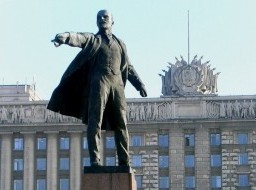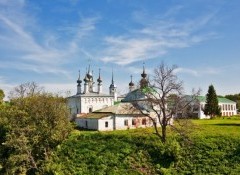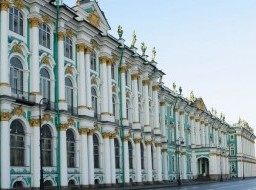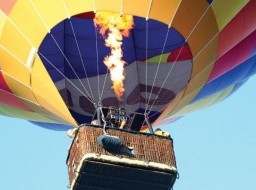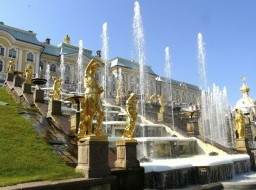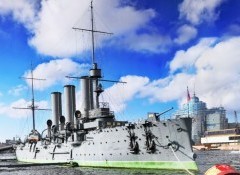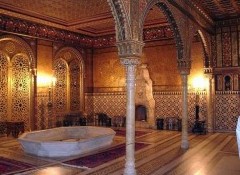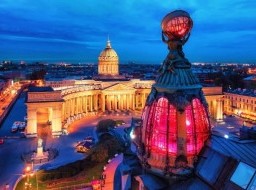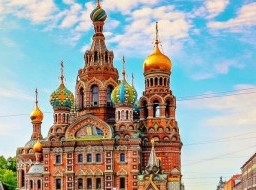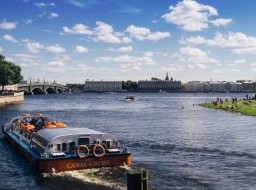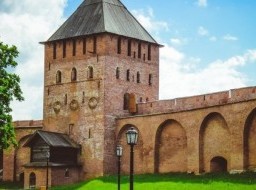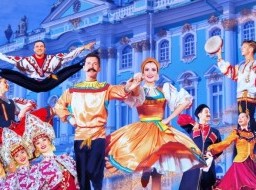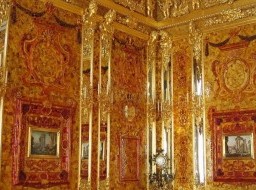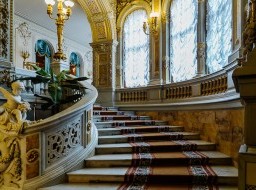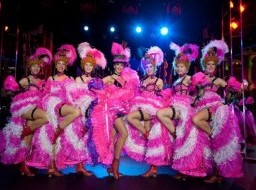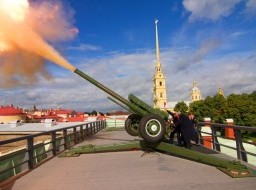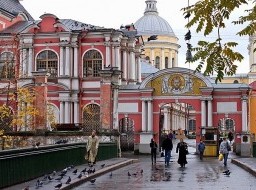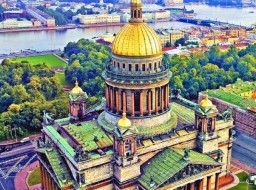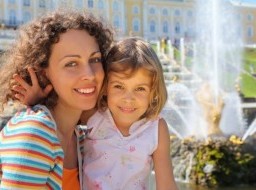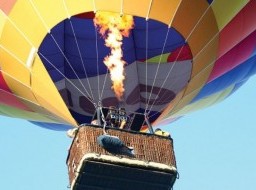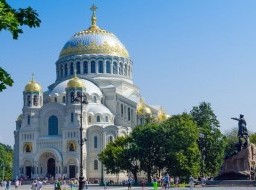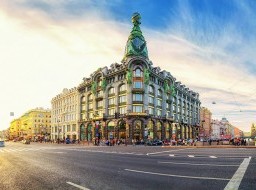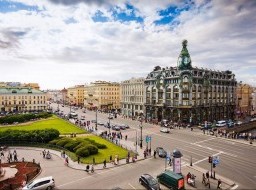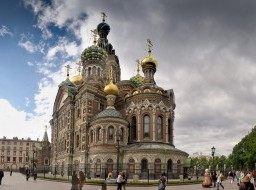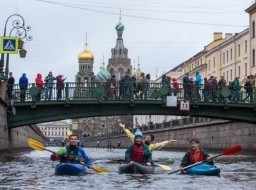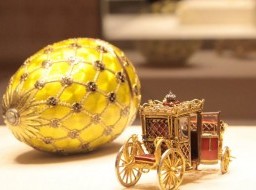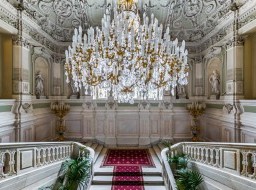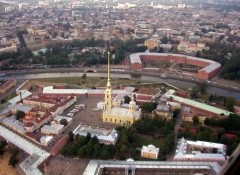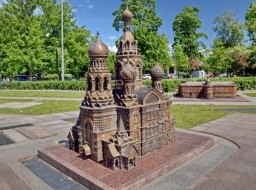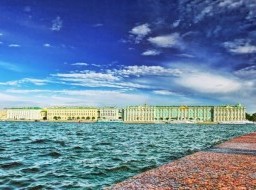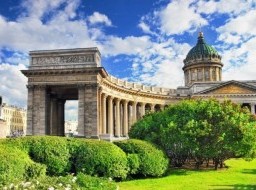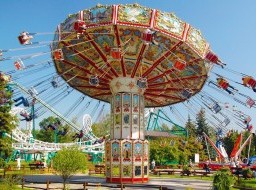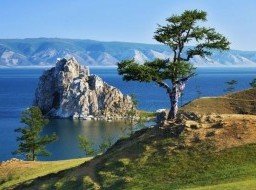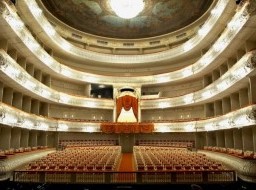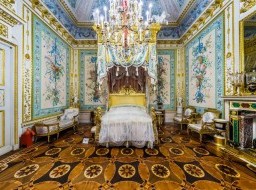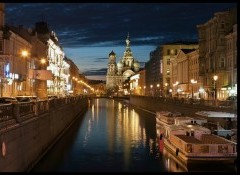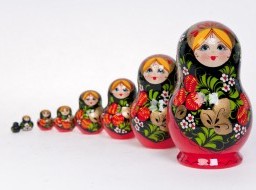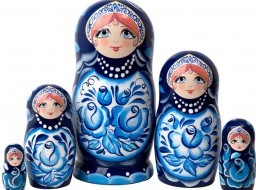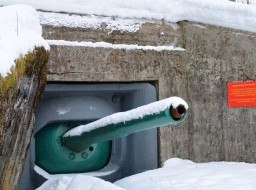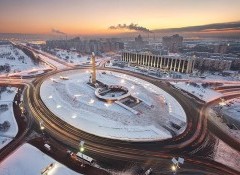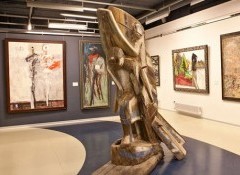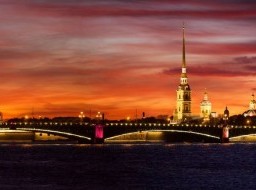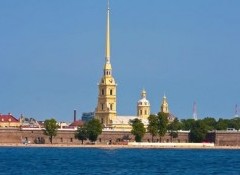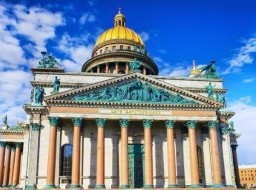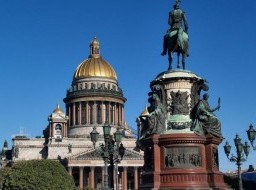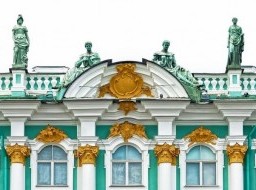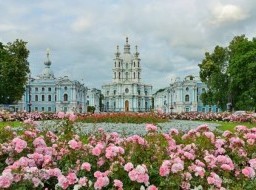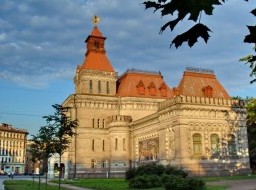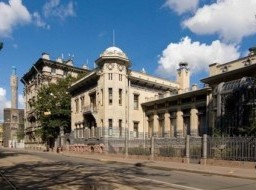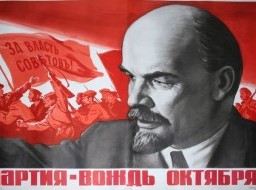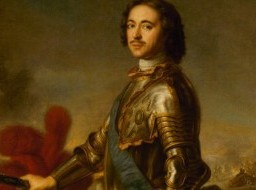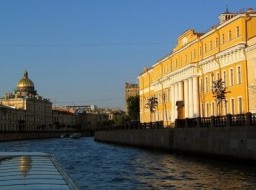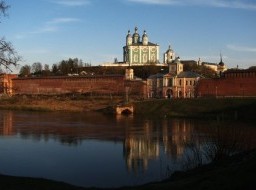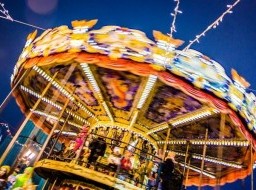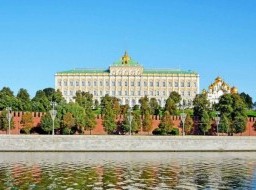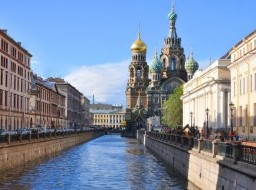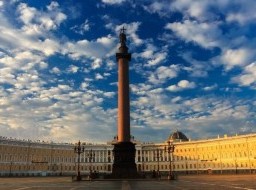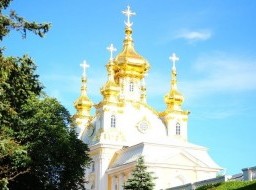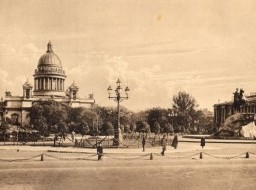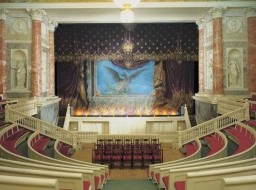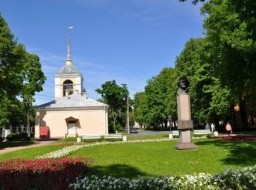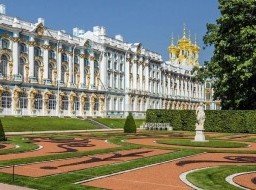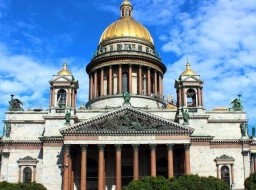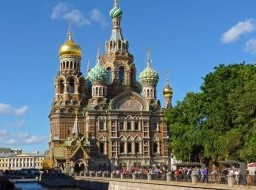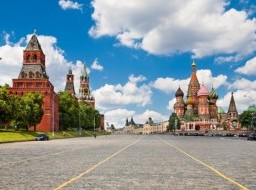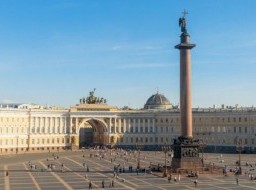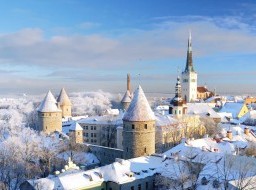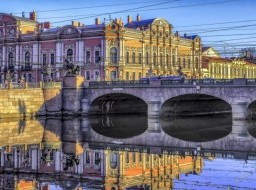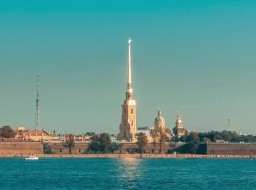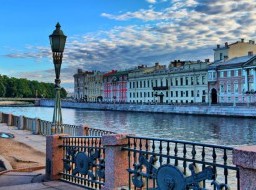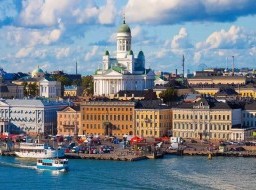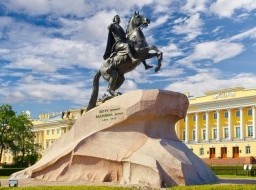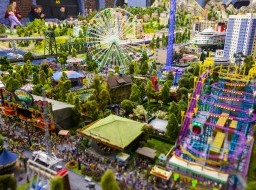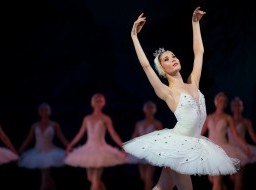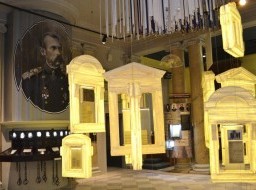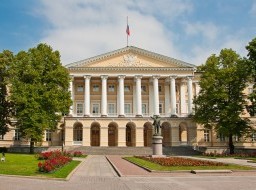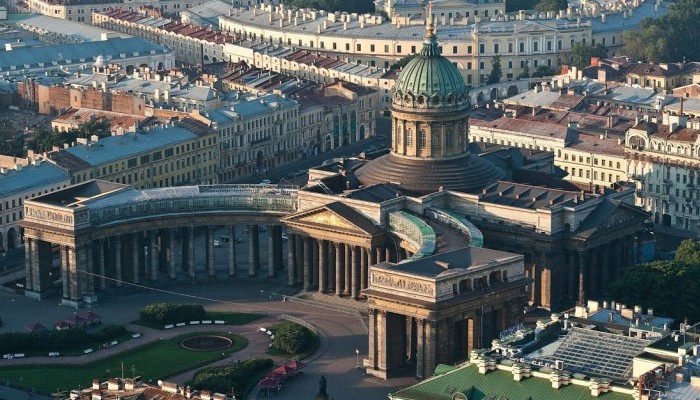Nevsky Prospect
Almost three miles (five km) long, Nevsky Prospekt is one of the best-known streets in Russia and is the main thoroughfare of St Petersburg, starting at the Admiralty whose gilded spire is a famous city landmark, to the Moscow Railway Station and then to the Alexandr Nevsky Monastery where some of the country's most celebrated artistic figures are buried. It has been the hub of the city for centuries, cutting through the most historical part, and home to the most important sights in the city. Intersected by rivers and canals, the most beautiful part of the avenue surrounds the Griboedova Canal. Here the impressive colonnade of the grand Kazan Cathedral catches the eye, curving around a small grassy square, and opposite the view along the canal towards the multi-colored onion domes of the Church of Our Saviour on the Spilled Blood (officially called the Resurrection of Christ Church) is breathtaking. Modelled on St Basil's Cathedral in Moscow and adorned with exquisite mosaic panels the church is one of St Petersburg's most striking landmarks, built on the site of the assassination of Emperor Alexander II in 1881. As well as many churches the street boasts St Petersburg's finest shops and restaurants, old manors and impressive buildings, and a beautiful mixture of architectural styles from the different periods of its history. 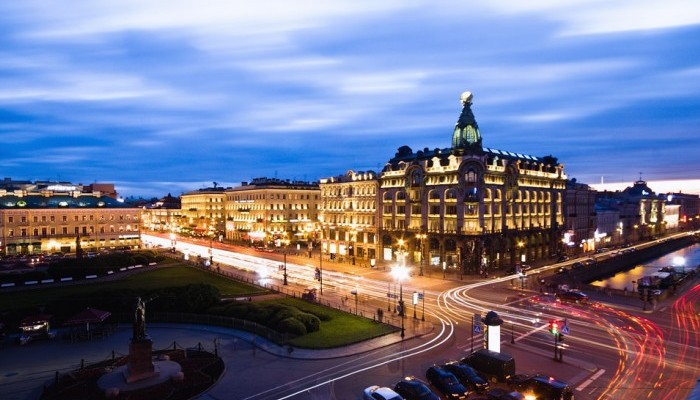 Singer House opposite the Kazan Cathedral on Nevsky Prospect is an object of Russian cultural heritage “There is nothing better than Nevsky Prospect, at least in St. Petersburg; on it there is everything. What on this street does not sparkle? It is the beauty of our capital!” wrote Nikolay Gogol in the opening line of his work about the main thoroughfare of St. Petersburg. The most famous street in Russia, Nevsky Prospekt is renowned for its fine architecture and famous residents. Palaces, churches and monuments, along with shops and restaurants, line the boulevard. Originally known as the Great Perspective Road, Nevsky Prospekt was designed circa 1718 by French architect Alexandre Jean Baptiste LeBlond, who was employed by Peter the Great and given the task of creating a number of buildings and thoroughfares throughout the city. This grand boulevard was cut through acres of woods where packs of wolves once roamed. In its early years, the street was prone to flooding and historic accounts note that it was sometimes navigable by boat rather than on foot. But, nonetheless, the Great Perspective Road quickly became famous for the opulent houses that were built up and down the street, which runs from the Admiralty on one end to a monastery on the other. Nevsky Prospekt at Gostiny Dvor, St. Petersburg Nevsky Prospekt at Gostiny Dvor By the end of the 19th century, the street had the most expensive real estate value in the country and many banks and other financial institutions were headquartered here. The street was eventually renamed for Alexander Nevsky, a patriotic 13th century hero who defeated the Swedish and German invading armies. He was later canonized and his remains lie at the monastery which sits at the end of the Prospekt and also bears his name. Throughout the centuries, Nevsky Prospekt became "the place" to live if you were a wealthy Nevsky Prospekt Nevsky Prospekt and well-known citizen of St. Petersburg. Famous residents include composers Peter Ilyich Tchaikovsky and Nikolai Rimsky-Korsakov, renowned early 20th century Russian dancer Vaslav Nijinsky, and author Nikolai Gogol.
The main shops and businesses of St. Petersburg are located on and around Nevsky Prospekt, which has been compared to Paris's Champs Elysées. While shopping and dining seem to be the major activities occurring along the Prospekt, there are, however, a lot of buildings of note along the way where Stroganov Palace, Nevsky Prospekt, St. Petersburg Stroganov Palace visitors should stop and take a look, especially at the section between the Admiralty and the Anichkov Bridge. Starting at the Admiralty, the first building at Nevsky Prospekt nr 1 is a magnificent Art Nouveau Building. A bit further east, at nr 15, is the Barrikada Cinema, known simply as the 'house with columns' for its colonnaded façade. Just east of the Moika Canal is the Stroganov Palace, a pink and white Baroque structure which was completed in 1760 and designed by Italian Court architect Rastrelli. It's where the famous beef dish of the same name was invented! A bit further across the Kazan Cathedral, Nevsky Prospekt, St. Petersburg Kazan Cathedral street is a Lutheran church with a classical, twin-towered facade. Across the church is the imposing Kazan Cathedral. Built in a semi-circle with 96 gigantic columns (visible from the rear due to the mandated westward-facing direction of the altar), this ornate Orthodox Church was once home to the Museum of Religion and Atheism. Located at nr 18, Literaturnaya Café is a delightful example of pre-Revolutionary St. Petersburg architecture and was a favorite hang out of Pushkin during the years it served as a confectionary company. Gostiny Dvor, Nevsky Prospekt Gostiny Dvor Continuing east, there are two more churches on the east side of Nevsky Prospekt: St. Catherine's, an 18th century church and the Armenian Church, a picturesque blue and white structure built in 1780. Across the street is Gostiny Dvor, a large department store housed in an impressive historic structure with long arcaded halls. Adjacent to Gostiny Dvor is the Russian National Library, the second largest in the country. The majestic statue of Catherine the Great graces the bordering square. The statue is placed in front of the Alexandrinsky Theater, designed in neo-Classicist style by Carlo Rossi. Anichkov Bridge, Nevsky Prospekt Anichkov Bridge Across the wide Fontanka canal is the beautiful façade of the Beloselsky-Belozersky Palace. The bridge spanning the Fontanka canal features a series of four bronze statues of wild horses and their tamers which were, for 60 years, buried for safekeeping, finally being resurrected in 2001. Further west the Nevsky Prospekt passes along Moskovsky Vokzal (Moscow Station), a large train station originally built in 1851. The street ends at Alexander Nevsky Monastery, famous for its necropolis. |
|
